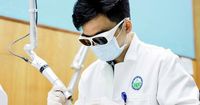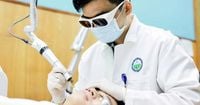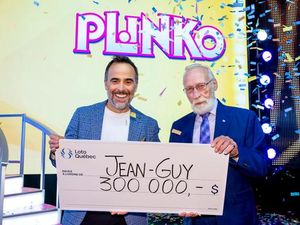The beauty industry in Vietnam is witnessing a significant transformation, particularly in Ho Chi Minh City, where a growing number of men and younger individuals are seeking cosmetic procedures. According to Dr. Nguyen Thi Phan Thuy, Director of Ho Chi Minh City Dermatology Hospital, this trend was highlighted during the Southern Dermatology and Cosmetic Conference held on March 30, 2025.
Statistics from the International Society of Aesthetic Plastic Surgery reveal that in 2023, the number of non-invasive cosmetic procedures increased by 1.7% compared to 2022. This marks a continuing rise in the popularity of aesthetic enhancements, particularly among demographics that previously showed little interest.
Dr. Thuy pointed out that while individuals over 25 years old still represent the majority of cosmetic procedure seekers, there has been a notable increase in those under 25. The percentage of this younger group rose from 3.1% in 2008 to 4.8% in 2019, indicating a shift in attitudes towards cosmetic enhancements.
At Ho Chi Minh City Dermatology Hospital, the trend is evident, with the number of young people opting for anti-aging services such as fillers and botulinum toxin injections rising sharply. In 2022, 15,992 individuals sought these services, which climbed to 18,952 in 2023 and is projected to reach 21,048 by 2024.
Notably, the number of men undergoing cosmetic treatments is also on the rise. In 2022, there were 9,703 male patients, which increased to 11,705 in 2023 and is expected to hit 13,653 in 2024.
Dr. Nguyen Trong Hao, Chairman of the Ho Chi Minh City Dermatology Association, explained that the interest in facial cosmetic procedures varies by age group. For instance, those aged 18 to 30 tend to focus on enhancements like nose and chin augmentations, while individuals aged 31 to 40 are more concerned with addressing wrinkles in the upper third of the face. Those between 41 and 55 are interested in treatments for nasolabial folds and sagging eyelids, and older individuals, particularly those over 70, seek to correct sagging areas on their faces.
Looking ahead, Dr. Thuy predicts that 2025 will be a pivotal year for regenerative medicine, emphasizing the use of natural cosmetics. She noted that young people are increasingly searching for cosmetic services that emphasize natural beauty, aligning with a broader trend towards sustainability and health consciousness.
"With the development of microbial technologies, nanotechnology, and biological formulations, we can expect many safe, effective, and long-lasting regenerative medicine products to emerge in 2025," Dr. Thuy said.
Moreover, she highlighted that while stem cells and exosomes show promise in skin rejuvenation, their use must be approached with caution due to legal and regulatory constraints. Currently, embryonic stem cells are prohibited, and while adult stem cells are permitted in some countries, their use is tightly regulated. In Vietnam, the Ministry of Health has not yet approved the use of exosomes for aesthetic treatments, making compliance with legal standards essential.
In a related event, from March 30 to April 1, 2025, the Faculty of Odonto-Stomatology at the University of Medicine and Pharmacy in Ho Chi Minh City is hosting the 47th scientific and technical conference focusing on the theme: Dentistry Towards the Future. This conference underscores the role of artificial intelligence (AI) and digital technology in the diagnosis, treatment, and management of dental care.
Professor Dr. Pham Van Khoa, Dean of the Faculty of Odonto-Stomatology and head of the conference organizing committee, emphasized that AI, dental robots, 3D printing technology, and new biomaterials are revolutionizing the field of dentistry both in Vietnam and globally.
The conference will address practical issues such as how AI can support imaging and treatment planning, the use of dental robots in surgery and prosthetics, and the role of 3D printing in creating precise dental prosthetics while shortening treatment times. Additionally, new generation biomaterials that are safe and highly compatible with the human body will be discussed.
This year’s conference is expected to attract over 40 international experts from countries with advanced dental practices, including France, Japan, South Korea, Thailand, and Australia. More than 60 presenters will share their insights, and the number of delegates is projected to exceed 3,000, marking a record attendance.
Furthermore, this conference commemorates 35 years of collaboration between Vietnam and France in the field of odonto-stomatology, highlighting the long-standing partnership in advancing dental science and education.
As the beauty and dental industries continue to evolve, the emphasis on natural and sustainable practices is becoming increasingly apparent. Both fields are adapting to meet the growing demands of younger generations who prioritize health, safety, and environmental sustainability in their beauty and health choices.





